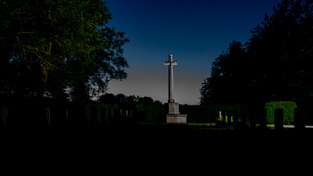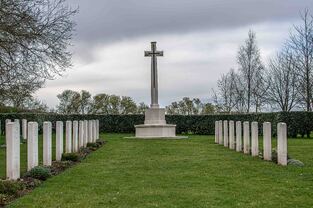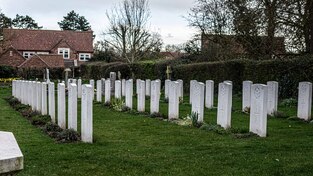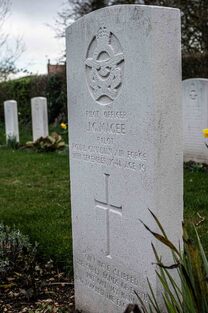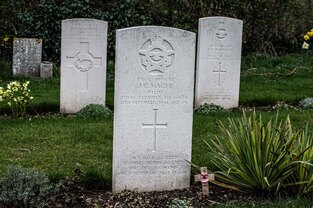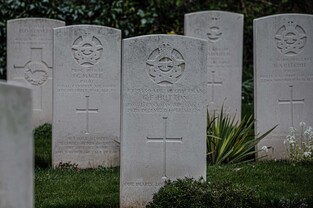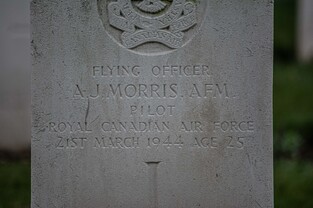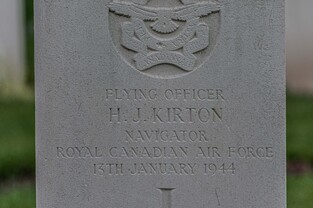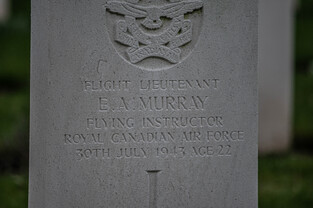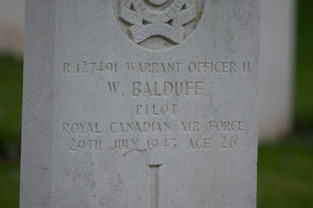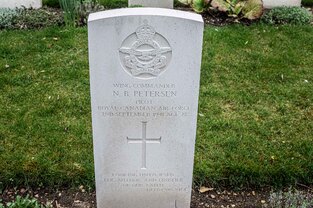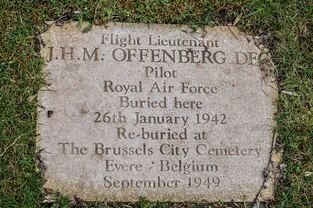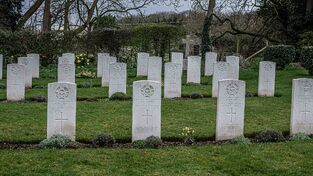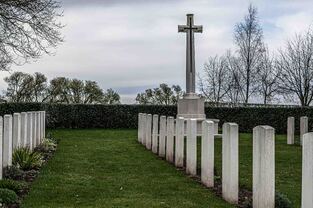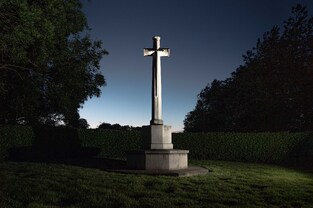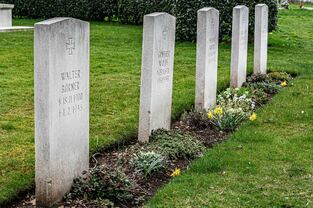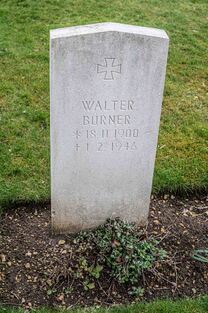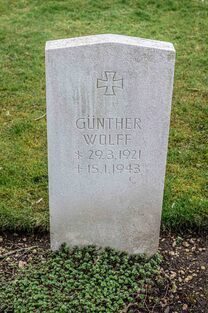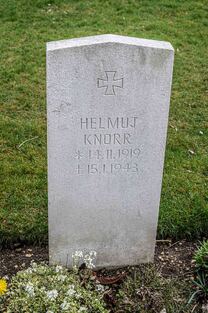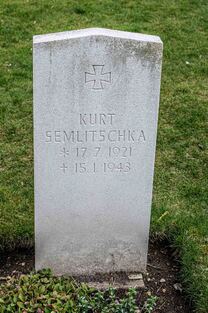- Home
- About The Project
- About The Author
- Latest additions to the project
- Operation BULBASKET
- Oradour-Sur-Glane Massacre 10 June 1944
- British Normandy Memorial
- John Northend - The Inspiration
- Lancaster W4192 "QR-E" 61 Squadron RAF
- The Cemeteries; UK, Ireland and European mini-tour
- Aarestrup Kirke, Denmark
- Aarestrup Kirke - Loss of Liberator KH410
- Aarhus Vestre Cemetery, Denmark
- Arnhem Oosterbeek Cemetery, Holland
- Basingstoke, Wortley Road Cemetery
- Bayeux War Cemetery, France
- Church Of Ireland Churchyard, Belturbet, Republic of Ireland
- Bergen-Op-Zoom, Netherlands
- Bretteville-sur-Laize Canadian War Cemetery
- Brookwood Military Cemeteries
- Cambridge American Cemetery
- Cranwell, St Andrews Parish Church
- D-Day Gold Beach - Remnants of Mulberry Harbour
- Deutsche Soldatenfriedhof, Cannock Chase
- Deutsche Soldatendfriedhof La Cambe, Normandy
- Dunkirk Town Cemetery, France
- Enniskillen Roman Catholic Cemetery
- Escoublac-La Baule War Cemetery St Nazaire
- HAMEL MILITARY CEMETERY, Somme Department, Northern France
- Harefield St Mary's ANZAC Cemetery
- Royal Victoria Hospital Netley and Military Cemetery, Southampton
- Nijmegen Jonkerbos War Cemetery
- Northwood Cemetery
- Odense Assistens Cemetery, Denmark
- Poperinghe New Military Cemetery, Belgium
- Ranville Churchyard, France
- Ration Farm Cemetery, Chapelle D'Armentieres, France
- Reichswald British War Cemetery, Germany
- Runnymede Commonwealth Air Forces Memorial
- Scopwick Burial Ground, Scopwick, Lincolnshire
- Sleaford Cemetery
- Sainte Marè Église
- CWGC Eyes On, Hands On Volunteer Programme
- Biography Flight Sergeant Eleanor Maud Barker WAAF
- Biography Commandant Roger Baudoin French Foreign Legion
- Biography Trooper George Sydney Herbert Biffin B Sqn 1 SAS
- Biography Lance Sergeant Charles Frederick Bristow GM RE
- Biography Lt HD Brotheridge Ox & Bucks Light Infantry
- Biography Lieutenant W H England No 48 RM Commando
- Buffalo LVT 'Conqueror' destroyed at Walcheren.
- Biography Pilot Officer Emil Fechtner RAF (Czech)
- Biography Private Oswald Fisher 2nd RM Bn, RN Division, RMLI 1916
- Biography Lt Col J G Fitzmaurice MC Royal Tank Regiment
- Biography Flight Sergeant Josef František DFM* RAF
- Biography Sergeant Pietro Alfredo Giovetti RAFVR
- Biography Lieutenant John Grayburn VC, 2 Para
- Biography Lt Cdr Nicodeme Guilonard Netherlands Navy
- Biography Major The Viscount Arthur Onslow Edward Guinness, Viscount Elveden.
- Biography Captain PH Haydon DSO No. 41 RM Commando
- Biography Private Owen Hooper, The Buffs & 4 Commando
- Biography Lieutenant Joseph Patrick Kennedy Jr. US Navy
- Biography Flight Lieutenant DSA Lord VC RAF
- Biography Major Robert Reid Maitland MB CHB RAMC
- Biography Wg Cdr Jaroslav Maly RAF
- Biography Lieutenant Colonel William McDowell DSO BSc RE
- Biography Flying Officer Geoff Adrian Mombrun RAFVR
- Biography Marine Byron Moses No. 41 RM Commando
- Biography Flying Officer J E Northend RAFVR
- Biography Group Captain 'Bobby' Oxspring DFC** AFC RAF
- Biography FO Ludwik Witold Paszkiewicz DFC RAF
- Biography Lieutenant HE 'Jimmy' Pearson MC The Reconnaissance Corps
- Biography Rifleman Frank Pennefather, 3rd NZ Rifle Brigade
- Biography Sergeant Robert John "Jack" Preece, 61 Squadron RAF.
- Biography Lieutenant John Richard Priestley The Rifle Brigade
- Biography Staff Sjt Christopher Robinson Glider Pilot Regt., AAC
- Biography Private AMB Roozeboom No 10 (I-A) Cdo
- Biography Sepoy Mahrup (Mahruf) Shah 129th Duke of Connaught's Own Baluchis
- Biography Flying Officer Burrell AT Soundy RNZAF
- Biography Private James Stokes VC 2nd Bn KSLI
- Biography Lieutenant Colonel Leon Robert ‘Bob’ Vance, US Army Air Force
- Taking Chance. The importance of remembrance.
- Useful Links- Museums and Websites
- MA FINAL PROJECT
The War Graves at Scopwick are in a burial ground some 100 metres behind the Church.
Scopwick is the village with a parish church closest to RAF Digby. RAF Digby was the first fighter base in the RAF ni 1918.
The majority of the graves in the burial ground at Scopwick are those of aviators of the Royal Canadian Air Force Squadrons based at RAF Digby during WW2. There are also a number of RNZAF and RAAF graves too. There are 5 German graves, four of them being the crew of a solo intruder aircraft that dropped a couple of bombs on Lincoln before being shot down by a Mosquito nightfighter from RAF Coleby Grange, and the fifth being a German Army POW who died in 1946.
The most famous grave is that of 19 year old Pilot Officer John GIllespie Magee Jr. Magee is famous as the author of the poem 'High Flight' which he penned after a high altitude test in his Spitfire; Magee logged an oxygen failure in his aircraft and it was later concluded that he had probably suffered from a short period of oxygen starvation, his poem being a literary explanation of how he felt during his period of hypoxia before reducing his altitude and restoring his oxygen supply through normal atmospheric levels. Magee was the son of Christian mercenaries in Shanghai, an American father and Engish Mother. When WW2 broke out, Magee was visiting American family and could not legally return to the UK from the USA, so he crossed the border into Canada and enlisted in the RCAF. After training he was posted to RAF Digby, from where he took off on a training sortie on the day he was killed. Descending in a flight of four Spitfires, he collided in mid-air with an Airspeed Oxford trainer from nearby RAF Cranwell. Although he bailed out, a local farmer observed that he did not have enough altitude for his parachute to deploy and he was killed when he impacted the earth.
